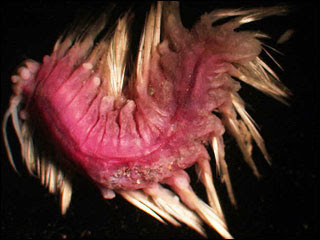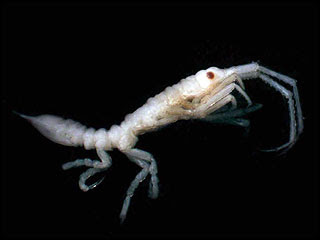I looked out the door at Simmons, my cat,
and shouted out loud, "What is that!
Simmons, how could you! Eek! It's a rat!"
There is was, out the door, on the mat,
head lolled over, just a big dead rat.
Next to it, my twitching tailed cat,
licked its gray paw. On haunches he sat.
Then he looked at me, then at the rat,
waiting for a reward, a stroke, or a pat,
A sweet, gentle, "Good, Kitty. Good, Cat."
I wondered, how Simmons, who was really so fat,
could have ever even caught that big old rat.
I ran inside, shoved aside my gardener's hat,
and took my pair of gloves out to remove the rat.
But when I returned, I saw the hurt on my tomcat,
my gosh, I'd never seen Simmons so sad,
and he was just about to run - to scat,
when I realized I'd hurt Simmons the cat,
by rejecting that bloody thing - that rat.
So I bent low, said, "Here, Kitty, Here, Cat."
And he bebopped over to me like a hepcat,
purred, meaowed, and lept over the mat,
and upended. Feet in air, he wallowed on the rat,
begging me to pet him - Simmons the cat.
I did. I stroked his fur, behind the ears - like that,
and ignored the blood and the rat gut splat,
and instead said, "Yes you are, you're a good kitty cat."
Well, Simmons smelled like a bitter muskrat,
or maybe a bit like a skunky polecat.
Still he deserved a stroke after that combat,
with a rodent so big, wow! That dirty rat.
Simmons acted like a teenaged brat,
but never had I had a loving like that -
not by a woman, a beast, a dog or a cat,
than I did that day by Simmons the cat.
Well, finally he was tired (because he was lazy and fat)
and scuffled off, though I'm not sure where at.
I scooped up the dead body - that bloody rat.
So, when I dug it out, and plopped it in a hole,
into a dark place, a grave as black as a bat,
well, me and the rat, we had us a brief chat.
Well, dear rodentia, goodbye, you filthy old rat.
Just then I burst out, laughing at that,
and how silly I was - even more than the cat,
and smiled at life's weird pleasures - at
love, life, and Simmons - my faithful old cat.
 Casper Kelly sent this from an email that was making the rounds. Originator is unknown.
Casper Kelly sent this from an email that was making the rounds. Originator is unknown.





















































